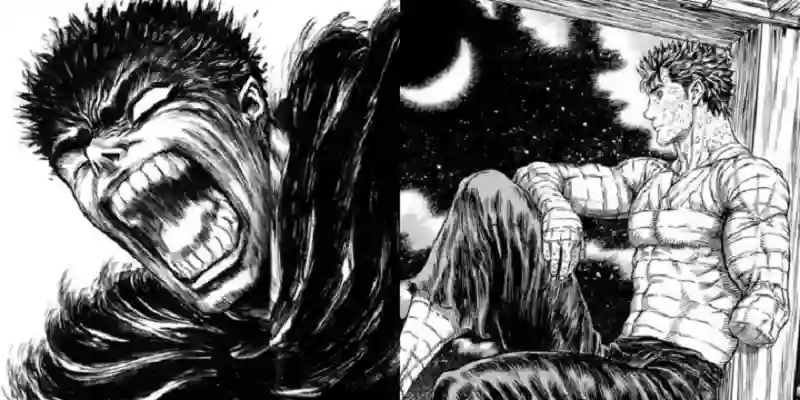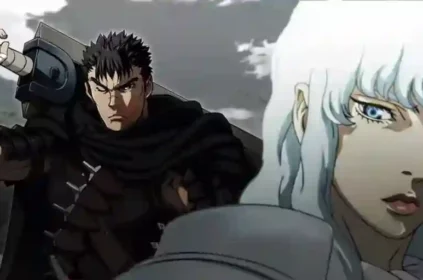Kentaro Miura’s dark fantasy manga masterpiece, “Berserk,” is celebrated for its complex characters and thought-provoking themes. At the heart of the narrative lies the theme of revenge and justice, which permeates the story and drives the actions of its protagonist, Guts. In this article, we will delve into how “Berserk” explores the concepts of revenge and justice, and how they shape the character dynamics and the overarching narrative.
The Genesis of Revenge
The theme of revenge is introduced early in “Berserk” through the character of Guts. As the Black Swordsman, Guts embarks on a relentless quest for vengeance against Griffith, his former comrade and friend who betrayed him during the Eclipse. This pivotal event, which saw the sacrifice of the Band of the Hawk to demonic entities, left Guts physically scarred and emotionally traumatized.
Guts’ pursuit of revenge is driven by a deep and burning rage, fueled by the horrors he witnessed during the Eclipse and the pain of betrayal. His quest for vengeance becomes a central element of the narrative, shaping his character and propelling the story forward.
The Complexity of Justice
As Guts seeks revenge, the concept of justice in “Berserk” is far from straightforward. The world depicted in the manga is one marked by moral ambiguity, where the line between right and wrong is often blurred. This complexity is reflected in the actions of the characters and the moral dilemmas they face.
Griffith, the object of Guts’ vengeance, is a character whose actions defy easy categorization. His ambition and the choices he makes, including his betrayal of the Band of the Hawk, challenge conventional notions of justice. Readers are forced to grapple with the idea that justice can be a subjective and elusive concept in a world defined by darkness and ambiguity.
The Cycle of Violence
“Berserk” also explores the cyclical nature of violence and revenge. Guts’ pursuit of vengeance leads to a series of violent encounters with apostles, supernatural entities, and other adversaries. These conflicts often result in brutal and graphic battles, showcasing Miura’s skill in depicting violence in a visceral and impactful manner.
The cycle of violence and revenge is exemplified in Guts’ character, as he becomes increasingly consumed by his quest for vengeance. His relentless pursuit of Griffith and the God Hand exposes the toll that revenge can take on an individual’s psyche and humanity.
The Grey Morality of Characters
One of the strengths of “Berserk” is its portrayal of morally complex characters. Guts, Griffith, and other figures in the story defy easy categorization as heroes or villains. Their actions are driven by personal motivations, desires, and flaws that make them compelling and relatable.
Guts, despite his quest for revenge, is not a one-dimensional avenger. His character undergoes significant development throughout the narrative, and readers witness his struggle to maintain his humanity in the face of the darkness that surrounds him. This internal conflict adds depth to his character and challenges conventional notions of revenge.
Griffith, on the other hand, remains a complex and enigmatic figure. His transformation into Femto and his ascent to power as a member of the God Hand blur the lines between villainy and tragedy. Readers are forced to confront the idea that justice and revenge may not always result in clear-cut resolutions.
The Price of Revenge
“Berserk” also explores the steep price that comes with the pursuit of revenge. Guts’ journey is one marked by physical and emotional trauma, as he endures countless battles and sacrifices in his quest for vengeance. His relationships with others, particularly Casca, are deeply affected by his single-minded pursuit.
The toll of revenge is not limited to Guts alone. Other characters, including Farnese and Serpico, undergo transformations and moral reckonings as they become entangled in Guts’ quest for vengeance. The manga challenges readers to consider whether the pursuit of justice through revenge is worth the price that must be paid.
Conclusion
“Berserk” stands as a compelling exploration of revenge and justice, delving into the complexities of these themes in a dark and morally ambiguous world. Kentaro Miura’s masterful storytelling and intricate character development elevate the narrative beyond simple vengeance tales, inviting readers to contemplate the blurred lines between right and wrong, justice and revenge.
Guts’ relentless pursuit of vengeance against Griffith, the cyclical nature of violence, and the morally grey morality of the characters all contribute to the richness of the narrative. “Berserk” challenges conventional notions of justice and revenge, offering a thought-provoking journey through a world defined by darkness, ambiguity, and the enduring human struggle to find meaning and purpose in a harsh reality.















